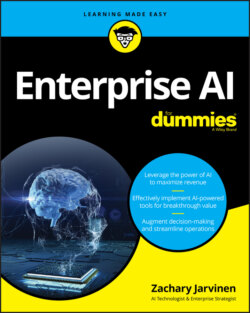Читать книгу Enterprise AI For Dummies - Zachary Jarvinen - Страница 33
Data mining
ОглавлениеData mining processes structured data such as is found in corporate enterprise resource planning (ERP) systems or customer databases, and it applies modelling functions to produce actionable information. Analytics and business intelligence (BI) platforms can quickly identify and retrieve information from large datasets of structured data and apply the data mining functions described here to create models that enable descriptive, predictive, and prescriptive analytics:
Association: This determines the probability that two contemporaneous events are related. For example, in sales transactions, the association function can uncover purchase patterns, such as when a customer who buys milk also buys cereal.
Classification: This reveals patterns that can be used to categorize an item. For example, weather prediction depends on identifying patterns in weather conditions (such as rising or dropping air pressure) to predict whether it will be sunny or cloudy.
Clustering: This organizes data by identifying similarities and grouping elements into clusters to reveal new information. One example is segmenting customers by gender, marital status, or neighborhood.
Regression: This predicts a numeric value depending on the variables in a given dataset. For example, the price of a used car can be determined by analyzing its age, mileage, condition, option packages, and other variables.
Because data mining works on the structured data within the organization, it is particularly suited to deliver a wide range of operational and business benefits. For example, data mining can crunch data from IoT systems to enable the predictive maintenance of factory equipment or combine historical sales data with customer behaviors to predict future sales and patterns of demand.
